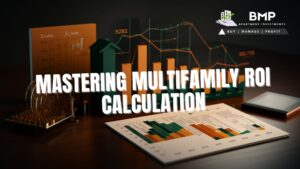As the real estate market continues to offer lucrative investment opportunities, multifamily properties stand out as a compelling option for investors seeking stable cash flow and long-term appreciation potential. However, navigating the world of multifamily real estate requires a thorough understanding of key performance metrics that determine the viability and profitability of such investments.
In this comprehensive guide, we will delve into essential performance metrics that every savvy multifamily investor should be familiar with. These metrics not only shed light on the financial health of a multifamily property but also offer valuable insights into its potential returns and overall attractiveness as an investment opportunity.
Cash-on-Cash Returns (CoC Returns):
Cash-on-Cash returns is a metric used to evaluate the profitability of a real estate investment, specifically from a cash flow perspective. It measures the annual pre-tax cash flow generated by the property as a percentage of the total cash investment made by the investor. The formula for calculating CoC returns is:
CoC Returns (%) = (Annual Pre-Tax Cash Flow / Total Cash Investment) x 100
A higher CoC return indicates a more favorable investment, as it represents a higher cash flow relative to the initial investment.
Preferred Returns:
Preferred returns, also known as “pref,” are a priority distribution of profits to certain investors in a real estate deal. These investors, often limited partners, receive a fixed percentage of the profits before other investors or the general partners receive their share. It acts as a form of compensation for the investors who took on more risk or provided capital at the early stages of the investment.
Internal Rate of Return (IRR):
The Internal Rate of Return (IRR) is a widely used metric in real estate investment to assess the profitability of a project over its entire holding period. IRR represents the average annual rate of return that an investor can expect to earn from their investment, taking into account the timing and size of cash flows, including both income and resale proceeds.
IRR is calculated by setting the Net Present Value (NPV) of all cash flows to zero and solving for the rate of return that accomplishes this. A higher IRR indicates a more attractive investment opportunity.
Average Annualized Return (AAR):
The Average Annualized Return (AAR) is another metric used to assess the average yearly return of an investment. It is similar to IRR but does not assume reinvestment of cash flows at the same rate. AAR is useful when evaluating investments with different reinvestment assumptions.
Equity Multiple:
The Equity Multiple (EM) is a measure of how much an investor can expect to earn for each dollar invested in a real estate project. It accounts for both cash flow and capital appreciation. The formula for calculating Equity Multiple is:
EM = (Total Cash Flow + Sales Proceeds) / Total Equity Invested
A higher Equity Multiple indicates a more favorable investment, as it represents a higher return relative to the amount of equity invested.
These metrics are essential tools for investors in multifamily real estate as they provide insights into the potential returns and profitability of a particular investment. Analyzing these metrics allows investors to make informed decisions and compare various investment opportunities to find the most suitable ones for their financial goals and risk tolerance.











